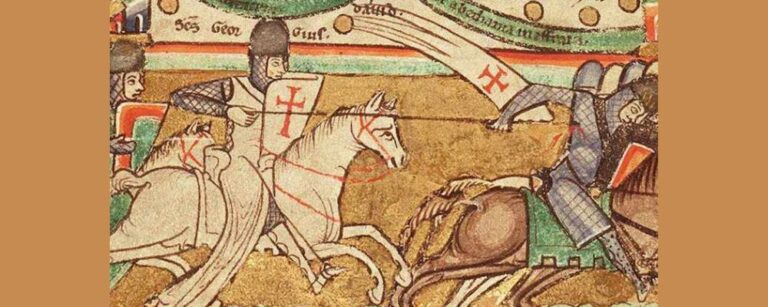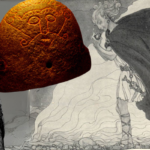While most people have heard of the Knights Templar and now that they have something to do with the Crusades, few people know much about their history or their Viking connection.
This is a brief history of the Knights Templar that highlights some of the practices that they seem to have borrowed from Viking warrior traditions.
Origins of the Knights Templar
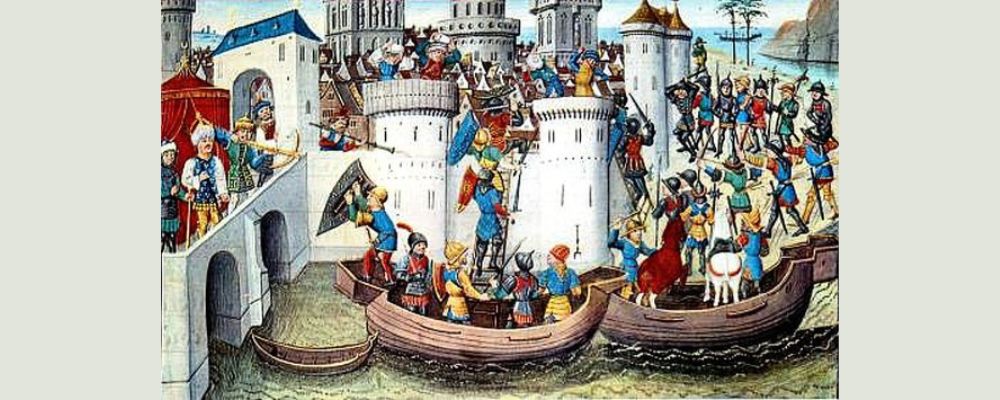
The First Crusade, between 1096 and 1099, was authorized by the Pope to try and take the Holy Land and bring it under Christian (or more specifically papal) control.
Many European Christian knights were recruited to join the fight, and in return for their service, they would be forgiven for all the sins that they confessed.
So, the Crusades also gave the Church a chance to bring knights who had begun to exploit their wealth and position under control.
The Crusaders eventually captured Jerusalem in June 1099. But the almost 10,000 knights (not to mention foot soldiers and non-combatants) wanted to come home.
Only around 300 knights were left behind to defend what was conquered and guarantee Christian pilgrims access to the Holy Land.
For that purpose, some of the devout knights who stayed behind would officially form the Oder of the Poor Knights of the Temple of Jerusalem in 1118/1119, better known as the Knights Templar.
They were officially recognized by King Baldwin II of Jerusalem in 1120 and were assigned tax revenue to them to keep them clothed and fed, though most were wealthy in their own right.
They were also exempt from paying tax or tithes to the church.
Now organized, the Knights Templar became a powerful, wealthy, and influential organization in both the Holy Land and Europe.
They created castles and strongholds in the Holy Land that were used during subsequent crusades.
Their main headquarters were located on the Temple Mount in a wing of the Al-Aqsa Mosque, rumored to be built on top of the Temple of King Solomon.
They were so wealthy that they are sometimes described as the first bankers.
What they actually did was hold the wealth of knights who went off to the Holy Land in their repositories.
They would also lend their wealth to important projects, such as the Church of the Holy Sepulcher in Jerusalem.
Code of the Brotherhood

More than just an arrangement of convenience, this was a religious calling for the knights.
They were led by a Grand Master, who was like a dictator and held the position for life.
The first Grand Master of the Knights, Hugh de Payens, established a 72-point code of conduct for members known as Primitive or Latin Rule.
These were specifically designed to increase the piety and zeal of the brothers.
The strict rules dictated what Templars could wear, the types of horses they could ride, the length of their hair and style of their beards, and what meat they could eat.
They wore a white surcoat and red cross representing Christ’s sacrifice and their own willingness to sacrifice themselves.
The rules also forbade contact with women, a rule that was probably largely ignored.
The knights were also required to take their meals in silence and there were scheduled prayers at canonical hours.
They were never allowed to retreat unless they were outnumbered by at least three to one, and they were not allowed to surrender unless their flag had fallen, in which case they were required to regroup.
This commitment to discipline, along with excellent training and heavy armament, made the Templars one of the most feared fighting forces for 200 years.
End of the Knights Templar
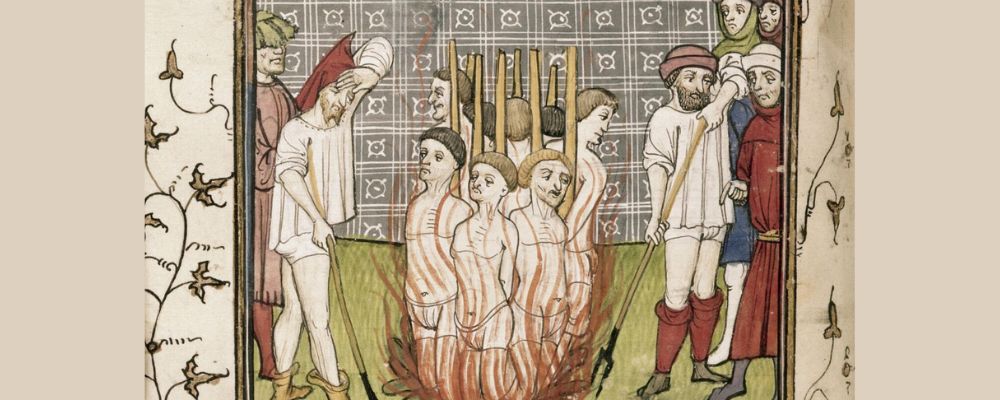
While there were several waves of crusades, the Holy Land was eventually lost to Muslim forces at the end of the 13th century.
The knights who were involved, including the Templars, were held responsible, especially after Acre was taken in 1291.
The decision to disband the Templars was probably because the king of France owed them quite a lot of money.
He ordered the mass arrest of French Templars and their property confiscated.
The name of the Templars was dragged through the mud and they were accused of heresy, such as spitting on the cross, illicit sexual acts, and sacrilegious and perverted ceremonies and beliefs, which included kissing one another.
Under torture, the Templars confessed to the charges. While they were absolved of heresy by the Pope in 1308, the order was disbanded, and their wealth was already seized by powerful men.
Some individual Templars would continue to be persecuted.
The last Grand Master, Jacques de Molay, was burned at the stake for heresy.
In Portugal, however, the king refused to prosecute Templars and they were able to thrive there and reform under the name Order of Christ.
This haven is often a gateway to conspiracy theories about the Templars never truly dissolving.
Most famously, Freemasons claim to have an ancient connection with the Templars and use many of the same symbols and ranks.
They once claimed to be directly descended from 14th-century Templars who took refuge in Scotland and helped Robert the Bruce win his battle at Bannockburn against the English for Scottish independence. This is now agreed to be a myth.
What’s the Viking Connection ?
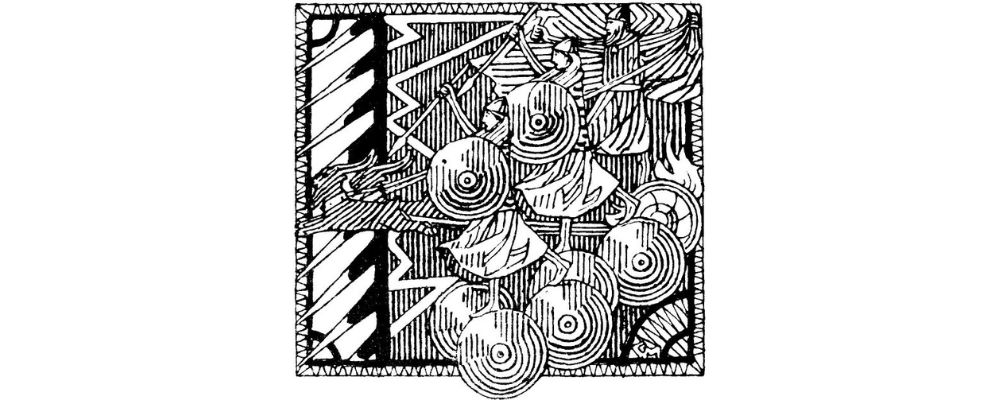
The idea of the call of a warrior also being a religious calling would have been familiar in the Viking world.
Even early in the Viking age, berserker warriors were part of a religious order that followed specific rules and engaged in rituals to commune with the spirits of ferocious animals before battle in order to fight better.
But even more relevant were the Jomsvikings, a legendary group of Danish Vikings who probably lived in what is now Poland and formed an elite order in the 10th and 11th centuries.
They also lived by a strict code.
They only accepted men between the ages of 18 and 50, and they had to be sponsored by an existing member.
They were not allowed to leave their stronghold for more than three days without permission and women were never allowed in the stronghold.
The Jomsvikings were not allowed to show fear in the face of the enemy and could never flee from a fight and were only allowed to retreat when severely outnumbered.
They could not speak poorly of one another and were honor-bound to defend their brothers. All spoils were shared equally among the brothers.
It might not be a coincidence that Norwegian Christian Vikings traveled around the Holy Land between 1110 and 1112, and met with King Baldwin I, one of the advocates of the Templars.
They may have brought Vikings and stories, embodied by the Jomsvikings, with them to the Holy Land.
